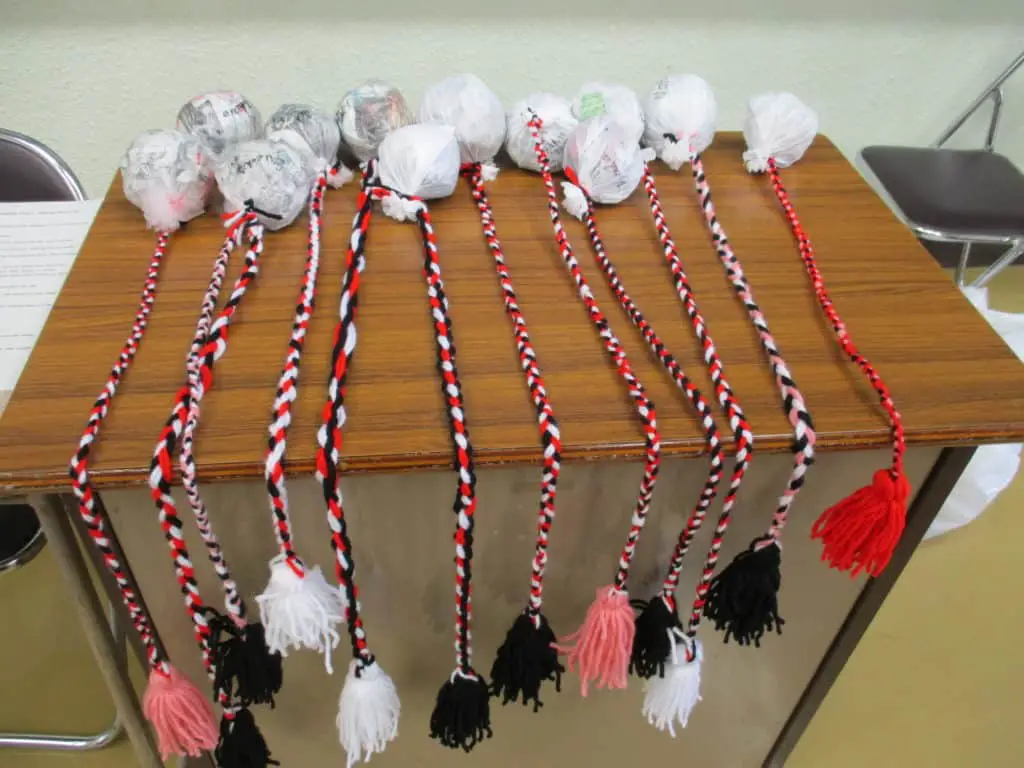The aim of this post is to demonstrate how I’ve used my culture as a New Zealander to design interesting activities for English clubs in Japanese elementary and junior high schools. The specific activities will not be relevant for many ALTs (unless you’re also from New Zealand). The takeaway I hope you get is the way in which culture informed my choices of activity, and how you too could share your own culture with your students.
Disclaimer About English Clubs
All the teachers in charge of the English clubs at my schools were happy for me to come up with my own activities using my own interests and culture. In fact they were grateful if I took the initiative and took any of the organisation off their workloads. I think that will be the case with most schools. However, I’ve heard about some schools, especially those focussed on high academic achievement, that want to use their English Club time for speech practice, help with homework etc… If you’re unsure, please check with your tanto (supervisor).
English Clubs as an ALT
As an ALT in Japan, chances are you’ll be asked to take charge of a school English Club. This can be both a good thing and a bad thing.
My initial thought was, “That’s great!” I’ll have all the best English students together at one time. The ones that actually want to communicate in English. I’ll be able to have real conversations, maybe even some debate. I’ll talk to them about cultural differences, exchange movie ideas, suggest books.
I was really quite wrong.
Around 50% of the students were there because they had some interest in English, but this by no means guaranteed a high level of English ability. I realised that those students in your lessons who were actually forthcoming and had some interest in what you were saying, and the ability to respond, were probably exceeding in other areas as well, like sport, music, science and probably belonged to another high intensity club that would prohibit them from attending your English club. I realised too, that the English club was pretty far down the pecking order in terms of the skills that the school wanted to promote in their students.
I dear say half of the students that came to English Club were there because it was far less vigorous than other school clubs. We only met monthly.
Given all of the above I still believe that English clubs are important and enjoyable for students and teachers.
There is always one or two students who enjoy English and want to talk to you as much as possible. I’ve found, over the years, that these are not necessarily the students who excel (or even participate) at English in the classroom. And then of course, it is part of your job is to raise their motivation levels regarding English.
Using your own culture in school clubs
As well as teaching English, your role as an ALT is as both a cultural ambassador for your country as well as an ambassador for the world outside Japan. I found that this was fertile ground when it came to coming up with activities for the club. The following ideas are how I used my culture, being from New Zealand, to come up with club activity ideas. As you’ll see, not all of them worked, and some of them were more difficult than others. But when it did come together, you had the students speaking in English and doing something which shone a light on what real people did overseas, in a different culture. And I found that this was an idea that the students really responded to.
Making Maori Poi
The first idea I had was a craft activity. Making Maori poi.

Poi is a performance art form that involves spinning weighted balls in rhythmic patterns. The word Maori word “poi” refers both to the balls, and the act of spinning them.
Traditionally poi were made from woven flax fibres, but as a child in New Zealand in the 80s we did crafts where we made them from wool and a plastic bags stuffed with newspaper.
That was great for the students in the club because they not only learned about a significant cultural aspect of New Zealand, but they also participated in something I did when I was a student.
Benefits
In terms of English use, it was great to use a sequence in giving instructions about making the poi. First, then, next, after that, finally etc.
With the use of visual aids, examples, and gesture, it was something that could be done almost entirely in English which gives the students a great self confidence boost.
An unlooked for benefit was how impressive the colourful woven poi looked. I used the finished poi as decorations around the English room and on some posters around the school.
Problems
Something that I didn’t anticipate was how much faster the girls were able to weave than the boys. Of course, it seems obvious in hindsight. Here I was saved by the performance aspect of poi. I had some video footage of poi spinning that the early finishers could learn while the others caught up.
The Haka
Given the subdued nature of Japanese students I had some reservations about teaching the haka as a club activity.
Luckily a number of things worked in my favour. It was during the Rugby World Cup in Japan so a greater number of students had seen it and knew what it was about. The school baseball team had an important game coming up, and they had asked me if I would teach them some of the words and actions so they could incorporate them into their team cheers. And it coincided with my parents and my sister visiting from New Zealand and they were happy to get involved.

The haka is in Maori, but of course my instructions are in in English. I gave the students a basic translation of the words. Just Japanese translations for the elementary schools, and English for the junior high school.
Problems
There were, of course, some students who were uncomfortable chanting loudly or doing anything like a dance.
Food
These lessons were without a doubt the students’ favourites every year. One reason was certainly because they got to eat the food. But I think it was also because they were doing something completely different from what they’d usually cook in Japan. It’s something different to have an English class in the cooking room, and its something different from what they would usually cook.
We cooked:
Cheese on Toast (Mousetraps)
Marmite, onion, bacon, cheese, grilled on toast
Stuffed Kumara (Sweet Potato)
Sweet Potato stuffed with cheese, onion, bacon, chives

Snacks
There is a brand of chocolate that is made near my hometown that is available in the foreign foods section of our local mall. They are available in small bite-sized bars. But rather than just giving the students some chocolate from New Zealand as a treat, I decided I’d turn it into a bit of a testing activity.
If you’re from New Zealand, Australia, or Britain, you’ll know that the taste of marmite or Vegemite is generally disliked here in Japan. It’s a very foreign taste, and given the salty taste, one that does not really make sense, to Japanese people, to be spread on bread.
And I’d also noticed the general lack of the aniseed flavour over here in Japan, in sweets, of course, but even in alcohol (I’m an ouzo fan).
NZ has two or three different types of lolly (sweet) made from aniseed. The most common being liquorice.
So, starting with the liquorice and working through the marmite sandwich to the chocolate, I had the students talk about what they were tasting. For both junior high school and elementary school we reviewed the simple taste words sweet, sour, salty, bitter.
Sports
Rugby
This lesson started off with a five-minute video tutorial where I showed some clips of both rugby and touch rugby, just to quickly demonstrate the fundamentals of the game. We then ran some drills of simple running and passing, before having about 40 minutes of touch rugby. As I said earlier I was assisted here by the recent Rugby World Cup in Japan and the Japanese team doing quite well. Generally all students knew what rugby was and had positive feelings about it.
The activity went really well, the teacher supervision also joined the game as did the basketball team that was training next to us.
It’s interesting to note what the students find interesting. I was surprised to find that some of the students were just as interested at looking at the match-sized ball, seeing how it felt and weighed, trying to pass it and kick it, as they were in playing the actual game.
Cricket
Cricket was a lot harder to get across to the students because it’s not known here at all. I could have used the whole club time just trying to explain the rules.
I bought some cheap, plastic, cricket sets off Amazon which just consisted of bat, ball, and stumps. Again, I showed some footage of games so students could get the idea, and I generally focussed my explanation on the ways it differed from baseball.
We played the game with mixed results. At junior high school we were able to get through a few games with some success. At the elementary schools the games all eventually became games of “batsdown” a variation on backyard cricket where there is one batsman and everybody else fields. When the batsman hits the ball the fielders scramble to stop the ball as close as possible to the bat. The batsman then lays the bat horizontally on the ground and the fielder rolls the ball from where it was stopped. If the fielding player hits the bat that player is the new batsman and the batsman becomes a fielder.

